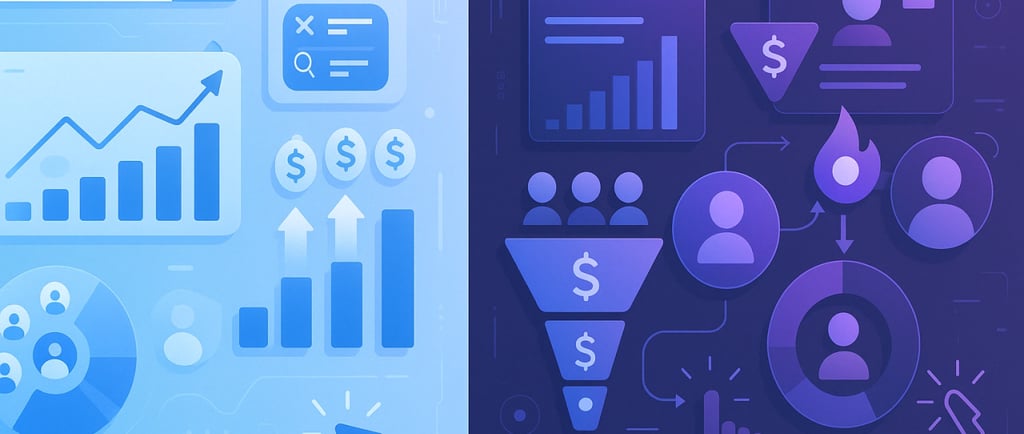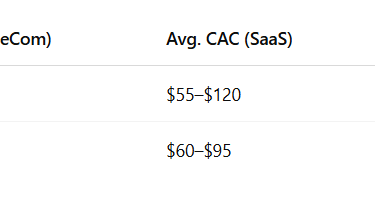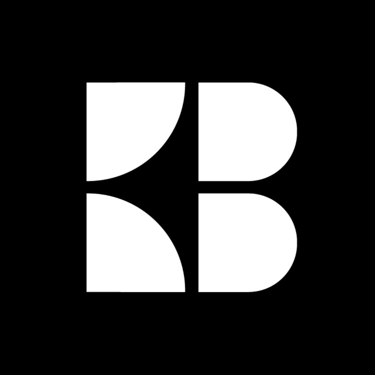The ROI of Google Ads vs. Meta Ads
A Performance Marketer’s View (2025)
GOOGLE ADS
5/3/20252 min read


In 2025, marketing budgets are leaner, AI is louder, and clients care about one thing: ROI.
Yet, I still see businesses throwing budget blindly between Google Ads and Meta Ads based on trends — not data.
Here’s my no-fluff breakdown of where each platform stands today, and how to allocate your budget smartly.
💰 CAC Comparison: Google Ads vs. Meta Ads in 2025
Let’s start where the CFO starts: Customer Acquisition Cost (CAC).
Observations (2025 trends):
Google’s Search + PMax tends to attract high-intent users, leading to more predictable CAC — especially for local and niche verticals.
Meta Ads (Instagram + FB) remain cheaper per click, but more volatile per acquisition, especially in cold campaigns.
CAC on Meta has increased by 15–25% YoY due to privacy tracking limitations and AI-driven competition.
🔍 TL;DR: Meta wins on volume + creative virality. Google wins on high-intent conversion and keyword specificity.
🏭 Industry Use Cases: Where Each Platform Wins
Different industries = different ad battlegrounds. Here’s what we’re seeing in 2025:
🛍️ eCommerce
Meta Ads dominate top-of-funnel (TOF) awareness: reels, carousels, dynamic ads.
Google Ads converts bottom-funnel (BOF): branded search, Shopping (especially with PMax).
Best strategy: Run Meta for scroll-stopping creatives → Retarget + Convert via Google.
🧑💻 SaaS / Tech
Google Ads performs better for B2B SaaS — users search when they’re problem-aware.
Meta underperforms unless you're targeting a very specific niche with value-led video hooks.
Best strategy: Use Google for demo/trial signups. Use Meta for brand storytelling or high-level awareness.
🛠️ Local Services
Google Local Search Ads, Maps, and Review extensions = high conversion, especially for “urgent” queries.
Meta can still work for long-cycle businesses (e.g., real estate), but not plumbing or dental.
Best strategy: Google Ads should be your bread & butter. Meta is optional.
🔥 Warm vs Cold Intent: The Intent Gap That Drives ROI
Here’s the fundamental difference:
Google Ads Meta Ads User Intent Warm (search-driven) Cold (disruption-based) Mindset “I’m looking for X” “You might like this…” Conversion Time Faster (avg. 1–3 days) Slower (avg. 5–14 days) Ad Type Keywords, shopping, PMax Scroll creatives, reels, UGC
Key Insight: ROI on Google is intent-led. ROI on Meta is creative-led.
The better your offer and visual storytelling → the better your Meta performance.
The better your keywords and landing page intent → the better your Google performance.
🎯 My 2025 Recommendations: When to Prioritize Each
👉 Choose Google Ads if:
Your product/service is already searchable
You need fast conversions and predictable ROAS
You operate in high-intent categories (SaaS, local, high-ticket)
👉 Choose Meta Ads if:
You’re testing new products or early-stage offers
You want brand visibility & creative testing at scale
You have strong video/UGC content and a longer sales cycle
💡 Bonus Strategy (What We Use for Clients in 2025)
For lean budgets (<$5K/mo): Start with Google Search + Retargeting Test Meta later with UGC or lead magnets
For scaling brands ($10K–$50K/mo): Run Meta TOF campaigns → Google PMax + Brand Search retargeting Use AI-based rules to shift budgets weekly based on ROAS
🧠 Final Thought
In 2025, there’s no “one winner”.
Both platforms can be wildly profitable — or painfully wasteful — depending on how well you match channel to buyer intent.
Run your ads like a funnel. Not like a coin toss.
Follow for more no-fluff, data-driven performance insights.
💬 Got questions on how to split budget for your niche? Drop them below.


